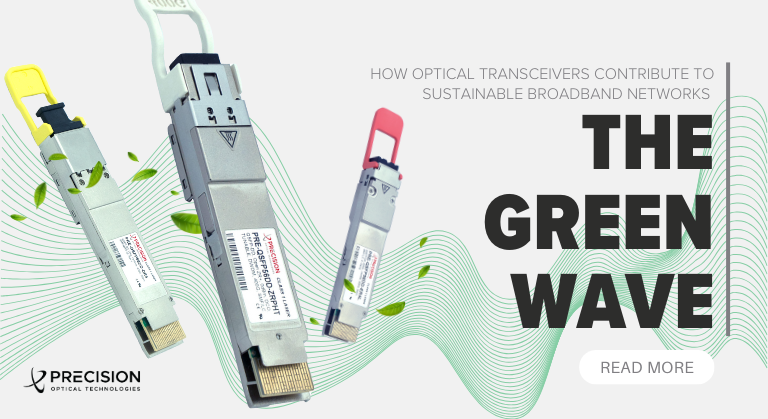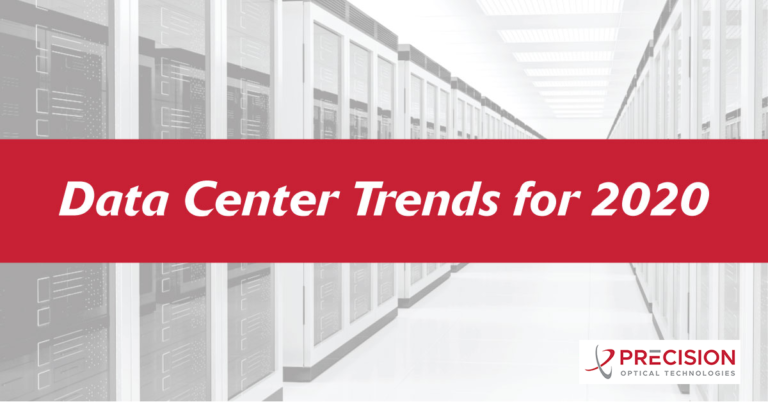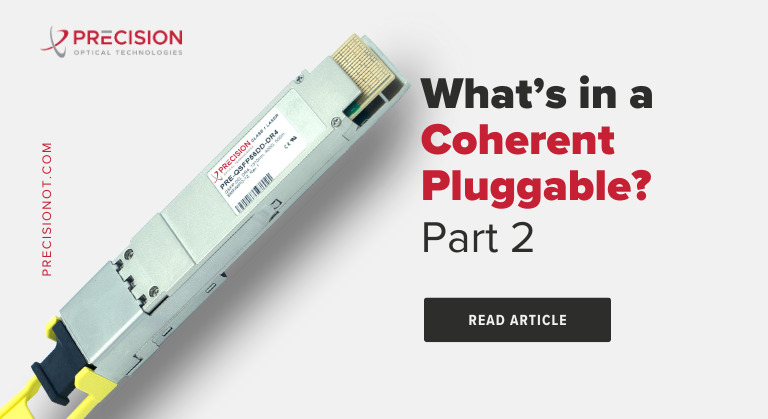
Five Trends That Will Drive Data Center Networking in 2020

As we approach the closing months of 2019, it’s always a good idea to take inventory of the trends and technologies that will likely affect the trajectory of our industry in the near future. According to Market Reports World, by 2022, the global optical transceiver market is anticipated to grow to more than $41 billion, up from $4.6 billion just four years ago, spurred by the availability and cost-effectiveness of 100G and 400G data center networking. So, let’s take a look at the main drivers that will influence this dramatic growth.
1. Demand for Bandwidth Will Drive DCI
Data center interconnect (DCI) technology enables the seamless transport of mission-critical assets over short, medium and long distances between data centers. Data sets entering or leaving a data center can range from hundreds of gigabits to terabits, and for this reason, networking equipment must be capable of providing reliable, high-capacity connections that can scale easily and quickly. The surge in cloud computing, the Internet of Thing (IoT) and over the top (OTT) video (theleading bandwidth consumer), plus the advent of AI and 5G, are driving rapid demand for more bandwidth in DCI solutions. While 100G is the current benchmark for high-capacity DCI, and many enterprises and service providers are currently reaping its benefits, expect more near-term adoption of 400G schemes while other data rates and technologies continue to play supporting roles.
Precision OT’s Contribution: Soon, we will be offering two form factors that make 400G possible in the optical network – QSFP-DD (Double Density) and OSFP (Octal SFP). While the OSFP form factor optics provide advantages in terms of power and cooling, QSFP-DD transceivers have the upper hand when it comes to backward compatibility with other QSFP family optics. Each with its own set of NEM backers, both 400G solutions currently coexist.
2. SDN Will Bridge the Edge and Cloud
The flexibility of software-defined networking (SDN) will drive more mainstream adoption of the technology, which in turn will encourage enterprise and network operators to upgrade to higher data rates. Furthermore, SDN technology will help bridge the gap between edge computing and cloud services because SDN can act as a decision-maker, sorting out which tasks should be uploaded and processed in the cloud, or at the edge. According to Technavio, the rise of IoT and edge computing will have a significant impact on the SDN market, which the research group forecasts will increase at a compound annual growth rate (CAGR) of nearly 24 percent between the current year and 2023.
Precision OT’s Contribution: Our proprietary Lightseer application is the industry’s first technology designed to monitor and analyze the physical layers of optical software-defined networks.Lightseer leverages predictive analytics and machine learning technologies to monitor and alert users of optical failures and anomalies before they cause network downtime.Lightseer is compatible with a wide variety of white box networking equipment and off-the-shelf SDN controllers.When periods of high network utilization occur on specific links, it’s the SDN controller that can then request more processing to be completed at the edge to eliminate network bottlenecks.
3. More Hyperscalers Will Go 400G
Driven by an increase in demand for cloud computing, more hyperscale data centers will rapidly begin to adopt 400G. Given that tech giants such as Amazon, Facebook, Google and Microsoft moved to 100G technology long before corporate and telecom data centers, it’s not surprising that they’ll push the computing performanceof their facilities to even higher levels, not only in support of their cloud services, but to deliver content to mobile devices. According to Cisco,mobile data traffic continues to increase globally and is predicted to reach 131 exabytes per month by the end of 2024, increasing at a 30 percent CAGR between 2018 and 2024. This year, the amount of global internet traffic that is mobile continued to climb, reaching upwards of 48percent of the total when last measured.
4. Sustainability Will Become Essential
Another factor that will play into the hyperscalers’ adoption of 400G is sustainability. Google and Apple have already converted their data centers to 100 percent renewable energy, while Microsoft and Amazon have announced plans to do so within the next decade. Because 400G offers a smaller footprint and lower energy consumption (per bit) when compared to older data-rate schemes, it provides the means for hyperscalers to become more responsible stewards of the environment. But it’s not just hyperscalers; it seems like every stakeholder in the global data center and optical transceiver sectors is embracing this trend. All enterprise and service provider data centers are starting to require the latest power and cooling methods from their new optical equipment purchases.
Precision OT’s Contribution: We’re embracing this movement by stocking our shelves with energy efficient transceivers and optical components. That includes the low-power-consuming CWDM4 modules and our Octal Small Form Factor Pluggable (OSFP) transceivers, which feature upgraded cooling technology.
5. End-to-End Monitoring, Analytics & Automation Will Differentiate the Competition
This last trend ties in with a few of the others; for instance, data center automation – a big push for hyperscalers who are trying to keep pace with the capacity race – is improving energy efficiency. Managing data centers is becoming more of a perfectionistic science, day by day. With the help of machine learning and AI-based platforms and applications, data center providers can understand more about their operations in a quick dashboard view than ever before – and therefore, proactively address any threats. During a time of unprecedented complexity in IT operations combined with alarming skill shortages, this technology is key.
Precision OT’s Contribution: Again, Lightseer comes into play here – seeing a hole in the market that needed to be filled, we built the application to monitor and analyze the physical components of optical software-defined networks. Lightseer allows operators to manage and automate the logistics of monitoring and configuring increasingly complicated networks.
Interested in learning more about the latest in optical networking, and how it will help to make data centers more efficient than ever before? Contact us today.






